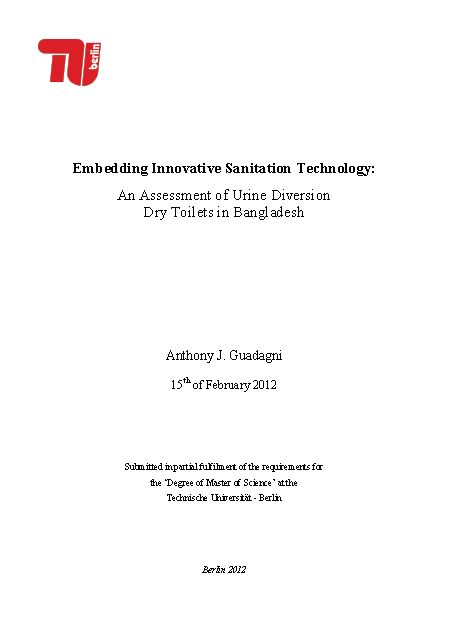Embedding innovative sanitation technology - An assessment of urine diversion dry toilets in Bangladesh
Guadagni, A. (2012)

Published in: 2012
Author:
Guadagni, A.
Uploaded by:
SuSanA secretariat
Partner profile:
common upload
4690 Views
108 Downloads
Location of library entry
Content - Summary
Compared with many other developing countries, Bangladesh has been reasonably successful in its more recent attempts to provide improved sanitation facilities to its population. However, many of the most common sanitation solutions advocated by the Government and development NGOs perform poorly in flood prone and water stressed areas, and fail to address other underlying issues such as poverty and food security in the country. Beginning in 2004, the ecological sanitation (ecosan)ideology was introduced in Bangladesh, offering a superior sanitation technology in the form of the urine diversion dry toilet (UDDT). This paper aims to assess how this innovative sanitation technology has become embedded in the socio-cultural fabric of several case study areas throughout Bangladesh, and better understand the processes by which this embedding occurs. A qualitative indicator set has been developed to assess the embeddedness of the UDDT technology and is applied to each of the case study areas in order to make determinations regarding the acceptance of and future prospects for this sanitation technology.
Bibliographic information
Guadagni, A. (2012). Embedding innovative sanitation technology - An assessment of urine diversion dry toilets in Bangladesh.
Filter tags
East Asia & Pacific English Rural Urine diversion dehydration toilets (UDDTs)














